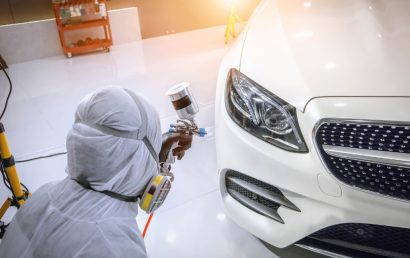Understanding Wear-Resistant Coatings For Pump Systems
Hard coatings are used to protect against wear of pump components. Wear-resistant coatings for pump systems also protect against corrosion damage. To have a better understanding of how and where these component coatings can be used, read on.
Pump Shaft Locating Journals And Bearing Journals
Locating journals:
If a corrosive service is where a pump will be used, corrosion resistant alloys are generally used to make bushes, sleeves, impellers, and pump shafts. But, poor metal to metal wear-resistance is a downfall of corrosion resistant alloys. They are extremely prone, during disassembly and assembly, to galling. When corrosion and galling resistant coatings are used to coat the shaft, however, the risk of galling is reduced. Hard chrome and hard chrome alternative technologies are now being used through an HVOF process to provide superior anti-galling and corrosion resistance in shafts made from stainless steel.
Bearing journals:
Integral to the shaft, lubricated bearing services or oil are frequently used. The reason for this is that, even with a clean process medium or oil, bearing surfaces are subjected to wear that is exceptional and was, at first, unexpected. The surface of bearings makes them particularly susceptible to damage by particles which produce abrasion. High shaft wear rates are a result.
To protect the shaft sleeve or relevant portion of the shaft, wear protection is provided by thermal spray coatings. These coatings must be particularly hard to stave off effects of particles that would ordinarily become embedded.
Diffuser and Impeller Vane Tips
Frequently subject to erosion are vane tip diffusers and impellers, due to the presence of the process medium’s solid particles. Increased energy consumption occurs when there is a decrease in hydraulic performance – a direct result of corrosion damage. This also reduces the service life of diffusers and impellers.
In this situation, a suitable coating is applied through an HVOF process. The coating used is WC-CoCr, or tungsten carbide cobalt chrome. Gun manipulation ends up being an extremely critical variable in the process. The reason for this is that distance and spray angle are variables upon which the quality of the coating is extremely dependent.
Casing and Impeller Wear Rings
Two different kinds of wear come into play where casing and impeller wear rings are concerned. Sliding wear damages wear rings, even when the process fluid contains no solid particles. This is because of contact between the stationary and rotating surfaces (which is unintentional).
A suitable anti-galling coating must be used to ensure a specific hardness difference between the rings. This reduces seizure risks. Impeller wear rings and casings use dissimilar metals, as well.
The main consideration in the selection of the coating process in this case is the associated high contact pressure and potential risk of frictional heating. Coatings and application processes in this situation must be chosen carefully.
Gland Packing Service Shaft Sleeves
A gland packing service uses shaft sleeves. These sleeves are frequently subject to damage by abrasion. The process medium deposits particles which eventually become gland packing embedded. The result, even with process mediums that are moderately clean, is an exceptionally high wear rate.
Abrasion corrosion accelerates the predominantly low stress abrasion, which is the wear mechanism in this case. The protective coating selection criteria would be the corrosion resistance and hardness of the sleeve surface.
Most popular in this instance are plasma sprayed ceramic coatings because they have an exceptional hardness rating and offer excellent wear-resistance. They can also be applied to basically any substrate including bronze, stainless steel, and steel. At A&A Coatings, we can refurbish components or provide thermal spray protective coatings to components that have not yet been damaged. Contact us today to find out what we can do specifically for your industry and your business.



